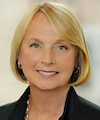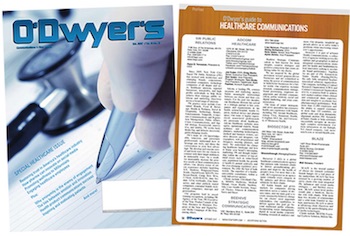|
|
What’s my takeaway from 40 years spent in public relations? Change, certainly. And most of it for the better.
Sure, there were the lunch losses: First, drinking at lunch, then lunching with an editor, then lunch period. Then there came the rapid acceleration of turnaround, from snail mail to Fed Ex to fax then email, messaging and Twitter. Farewell to telephone media pitches, and to bright young job candidates who boasted that their highest qualification was being “good with people.”
Substantive change, however, came in the form of steadily increasing professionalization of public relations and the growing recognition of its importance to organizations: commercial, scientific, professional, not-for-profit and governmental.
|
|
Below are a few of the important changes in PR professionals’ roles and practices in recent decades. They are specific to healthcare but also apply across the PR spectrum.
Brightest spots
Expanded range of PR practice. Today’s PR professional has a wide range of tactical responsibilities beyond the traditional media relations and monitoring and events: publishing, content sharing and promotion, community engagement, issue advocacy and more. Most important, PR professionals are now being asked not “what should we say” insomuch as “what should we do.”
Depth of knowledge of the client’s enterprise. Our grasp of the intricacies of the organizations we serve — what goes into them, what internal and external challenges they face from many sides — as well as our ability to analyze and forecast and solve problems, has earned us a seat at the decision-making table.
Focus on advancing organizational goals. PR is no longer seen as nicety or a capacity tapped only in times of crisis, but an essential part of organizational development. PR is now expected to “make things happen” and identify the strategies to do it. Tactics — which once defined PR — are now merely the tools to execute strategy.
Goodbye “general public.” The emphasis on results — and their measurement — mandates thoughtful and selective audience segmentation. Counting undifferentiated impressions will no longer cut it. Engaging communications targets takes careful and deft cultivation — another area where PR can excel.
The end of communications parochialism. We used to call them silos, as each communications discipline did its best to capture the largest role — and share of budget — in the endeavor. With the ascendance of “channel agnosticism,” PR has the opportunity — and the standing — to recommend and command the range of expertise needed to get the job done.
Challenges at hand
Change comes in many forms, some of them less tractable than others. The most significant questions for the future of PR practice lie in the external environment. In healthcare, as in many other sectors, we see the rise in public acceptance of opinion as equivalent to fact and anecdote having the same weight as data. This is not a brand-new development. Decades ago I recall Donald Kennedy, a former Food and Drug Commissioner and President of Stanford University, noting the trend in attitudes toward science: “It’s as if we believe it that it is good to have ideas and all ideas are equal.”
The broad dismissal of expertise in favor individual convictions is as troubling as it is understandable. The rise of “storytelling” as a communications device has certainly been effective but perhaps at the cost of tolerance for nuance, context and complexity.
Other social and political factors have potential impact on PR professionals’ work. One is the swelling skepticism among swaths of the public in the US and other industrialized countries regarding the statements and actions — if not the very existence — of politicians and policymakers, corporations, media and the public relations industry. While pointed questioning and evaluation makes for a vibrant democracy, outright rejection of all those labeled “elites” can curdle into unhealthy cynicism. This will make the work of all communications specialists trying to inform, engage and persuade all the more difficult.
Finally, we have yet to understand how much of “traditional” media will survive and in what form. We’ve already seen some versions of what could replace it. New online aggregators spring up every month, many with an overtly ideological cast; this can exacerbate the “echo chamber” issue whereby audiences seek out only those sites that reinforce their set beliefs. And while the Blogosphere is a remarkable phenomenon that does indeed constitute a kind of citizen journalism, it has limited breadth and depth. The investigative reporting and analysis vital to a strong Fourth Estate is beyond its capability, at least for now.
Moving forward
There’s no doubt the future will bring changes to our roles and an evolution of the hard and soft skills required. Technology will continue to alter what we do and how we do it. The larger issue, however, is how well we will serve our clients in the face of a rapidly changing cultural, political, scientific and economic reality. But if we remain faithful to the principle of seeking to achieve a “mutuality of satisfaction” among stakeholders, the PR profession will be key to healthy enterprises within a strong society.
We can take heart that no matter how many programs for scenario planning hit the market, the human factor — judgment, compassion, honesty and creativity — will remain fundamental to PR practice. No robot can replace you.
***
Lenore Cooney is Co-Founder of Cooney Waters, which is now part of Health Unlimited.

 Lenore Cooney
Lenore Cooney

 Lo Isidro, senior director at Real Chemistry with more than a decade of strategic communications and PA experience, has joined Narrative Strategies.
Lo Isidro, senior director at Real Chemistry with more than a decade of strategic communications and PA experience, has joined Narrative Strategies. Nelson Fernandez, former North American chair of APCO Worldwide and managing director of Burson-Marsteller, has joined Volunteers in Medicine Berkshires as director of communications and PA.
Nelson Fernandez, former North American chair of APCO Worldwide and managing director of Burson-Marsteller, has joined Volunteers in Medicine Berkshires as director of communications and PA. Lilit Bargar, who was most recently an EVP in the healthcare practice at Weber Shandwick, comes on board at GCI Health as EVP, corporate practice lead.
Lilit Bargar, who was most recently an EVP in the healthcare practice at Weber Shandwick, comes on board at GCI Health as EVP, corporate practice lead.
 Five ways that successful thought leaders are made.
Five ways that successful thought leaders are made.


 Have a comment? Send it to
Have a comment? Send it to 
No comments have been submitted for this story yet.